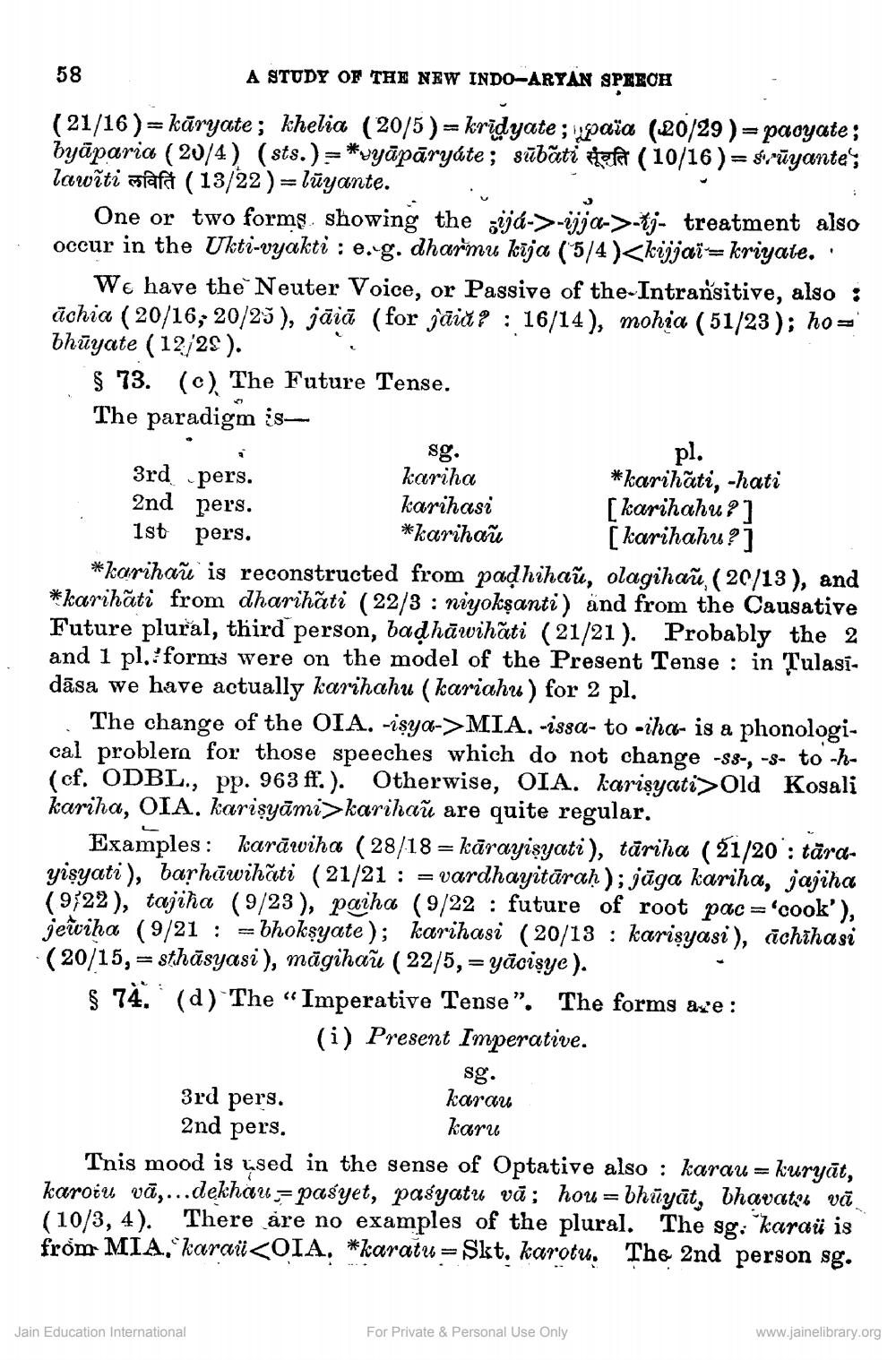________________
pl.
58
A STUDY OF THE NEW INDO-ARYAN SPEECH (21/16 )= kāryate; khelia (20/5) = kridyate ; païa (20/29 )= paoyate; byāparia (20/4) (sts.)=*yyāpāryáte; sübūti warnet (10/16 )= sirūyante'; lawīti zafat (13/22 )= lūyante. .
One or two forms showing the zijá->-vjja->-tj- treatment also occur in the Ukti-vyakti : e.g. dharmu kīja (5/4}<kijjai=kriyate.'
We have the Neuter Voice, or Passive of the-Intransitive, also : ächia (20/16; 20/25), jāiā (for jāia? : 16/14), mohia (51/23 ); hobhūyate (1228 ).
§ 73. (c) The Future Tense. The paradigm is
sg. 3rd pers.
kariha
*karihāti, -hati 2nd pers.
karihasi
[karihahu?1 1st pers.
*karihać į karihahu?] *karihañ is reconstructed from padhihaž, olagihał, (20/13), and *karihāti from dharihăti (22/3 : niyoksanti) and from the Causative Future plural, third person, badhāwihăti (21/21). Probably the 2 and 1 pl.forms were on the model of the Present Tense : in Tulasi. dāsa we have actually karihahu ( kariahu ) for 2 pl.
The change of the OIA. -isya->MIA. -issa- to-cha- is a phonological problern for those speeches which do not change -88-, -s- to -h(cf. ODBL., pp. 963 ff.). Otherwise, OIA. karisyati>Old Kosali kariha, OIA. karisyāmi>karihañ are quite regular.
Examples: karāwiha (28/18 = kārayisyati), tāriha (11/20 : tārayisyati), barhāwihăti (21/21 : = vardhayitāraḥ); jāga kariha, jajiha (922), tajiħa (9/23), paiha (9/22 : future of root pac='cook”), jewiha (9/21 : = Bhokşyate); karihasi (20/13 : karişyasi), dchihasi (20/15, = sthāsyasi), mägihał (22/5, = yācisye). $ 74. (d) The “Imperative Tense". The forms axe:
(i) Present Imperative.
sg. 3rd pers. 2nd pers.
karu This mood is used in the sense of Optative also : karau = kuryāt, karoiu, vā,...dekhau=pasyet, pasyatu vā; hou = bhūyāt, bhavataí vã (10/3, 4). There are no examples of the plural. The sg: karaü is from MIA, "karaii<OIA. *karatu = Skt. karotu. The 2nd person sg.
karau
Jain Education International
For Private & Personal Use Only
www.jainelibrary.org




